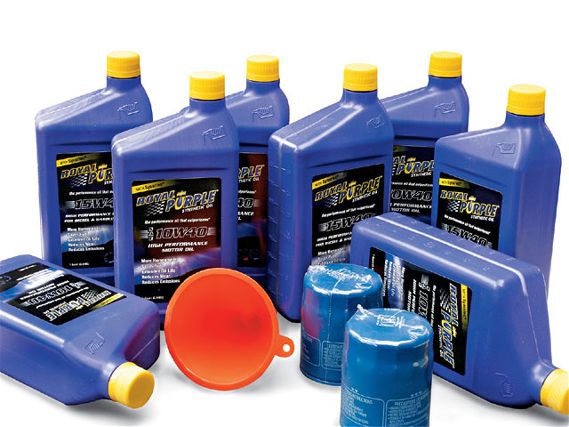 | Engine Oil Tech Tips - The Art Of Lubrication
| Engine Oil Tech Tips - The Art Of Lubrication
Know Your Oil
Oil: It's what prevents important metal parts from rubbing up against other important metal parts inside your engine, all the while keeping friction temperatures at bay, and preventing the rotating assembly from seizing up. Using the right oil is an important decision whether you're filling up your K-series or your lawnmower. As for your K-series, or pretty much any other Honda engine for that matter, most engines' oil caps display their recommended oil viscosities. If you happen to swap out your stock oil cap though, the info can be found elsewhere, like in your owner's manual, service manual, or online.
An oil's viscosity rating indicates its thickness, which directly determines its ability to flow at certain temperatures. Viscosity ratings ensure that a given oil will operate effectively and do its job properly, given that it's used in the correct application. Use an oil that's not suitable for low temperatures and it can thicken; use one not suitable to high temperatures and it'll thin out. If you changed your own oil in the '50s, then you remember using thicker oils in the summer and thinner ones in the winter. Of course, the weather and temperatures vary, which makes multi-viscosity oils much more popular than the single-viscosity versions your gramps used to use. Take a 10W-30 motor oil for example. The 10 represents how thick the oil will get during winter and, if you haven't caught on, the W stands for winter. The lower the number next to the W, the better the oil's cold-temperature performance. The 30, or whatever number is in that spot, means that the oil won't thin out any more than a 30-weight oil when hot. The lower the number, the thinner the oil. For example, a 30-weight oil is thinner than a 40-weight one when measured at 100 degrees C. As oil breaks down though, it becomes less capable of doing its job properly, which is why frequent oil changes are necessary. Since synthetic oils, like those from Royal Purple, are laboratory produced-not refined from natural petroleum-and can better resist breakdown even under extreme heat and friction, which means oil change intervals can be spaced a bit further apart.
Oil can be broken up into three standardized ratings: Society of Automotive Engineers (SAE), American Society for Testing and Materials (ASTM), and American Petroleum Institute (API). All three work together to provide the standards most commonly used today in order to keep up with changes in technology and vehicle demands. SAE classifies the viscosity type, ASTM specifies the petroleum products used, and API determines the ratings. Together, they can tell you what materials were used and whether or not it's suitable for your application.
